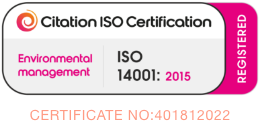A destination workplace is a carefully designed and curated work environment that goes beyond both the traditional office space and basic requirements of work to create a unique and inspiring experience for employees. It represents a new approach to the workplace that prioritises employee experience and engagement, fosters collaboration and innovation, and creates a sense of purpose and community
From the perspective of employers, destination workplaces are used to attract and retain talent. By offering a unique work experience, companies can differentiate themselves from competitors and carve a reputation as being a workplace where everyone wants to be. Creating a destination workplace can also be an opportunity to strengthen the culture and express the company’s values to its employees.
For employees, the destination workplace ultimately offers a better alternative to the home office, or at least a change of scenery, that also provides an opportunity to interact with colleagues in person. A well-designed workplace provides a healthy environment and allows creativity and easy collaboration, leading to increased productivity and a place where employees want to be.
Destination workplaces can also contribute to the development of vibrant communities attracting other businesses or opportunities for housing.
What Defines a Destination Workplace?
These are some key defining factors of a destination workplace:
Purposeful and Flexible Design: A destination workplace is a functional and inspiring environment designed with the intention of enhancing the employee experience. Elements like natural lighting, open spaces, and a variety of flexible work areas to accommodate different work styles and preferences contribute to a positive and engaging atmosphere.
Amenities and Facilities: For larger destination workplaces a range of amenities and facilities can be offered to enhance the employee experience. For example, on-site gyms, showers and bike storage, catered cafes or restaurants, social areas with games, and childcare facilities. By providing these conveniences, companies can support employees’ work-life balance and potentially supplement their salaries.
Employee Well-being: The physical and mental well-being of employees is a paramount consideration in a destination workplace. Ergonomic furniture and comfortable breakout areas promote physical comfort whilst spaces dedicated to mental well-being, such as relaxation areas and quiet zones allow employees to recharge and rejuvenate.
Community, Collaboration, and Culture: A destination workplace cultivates a sense of community and encourages employee engagement and a positive work environment. It offers dedicated spaces for teamwork and provides opportunities for social interactions, team-building activities, and events that promote collaboration and strengthen relationships. The workplace becomes a place where employees feel connected and inspired.
Technology Integration: Embrace advanced technology to facilitate seamless communication and collaboration that enables employees to work efficiently and effectively.
Sustainability: All modern workplaces must prioritise sustainability in their decisions and demonstrate commitment to reducing their environmental impact and contributing to a greener future. The design should integrate energy-efficient systems and ethically produced and environmentally friendly materials and products.
How to Create a Destination Workplace
Creating a destination workplace involves selecting furniture and other office solutions that contribute to the overall experience and functionality of the space. These are some things to consider including in the space:
Ergonomic Furniture: Invest in ergonomic office chairs, adjustable desks, and monitor arms that promote a healthy posture and prioritise employee comfort and well-being.
Collaborative Workstations: Choose versatile furniture that promotes collaboration, such as modular desks or workstations that can be easily reconfigured for different team sizes and activities. Incorporate writable surfaces like whiteboards or glass panels to encourage brainstorming and idea sharing.
Comfortable Lounge Areas and Wellness Spaces: Create inviting and comfortable lounge spaces with soft seating and coffee tables to encourage employees to gather and build relationships. Add rugs, lighting, and artwork to enhance the relaxing ambiance.
Quiet Areas: Consider incorporating privacy screens, acoustic panels, or noise-canceling solutions to provide employees with quiet and focused work areas. Phone booths or enclosed pods can offer private spaces for confidential conversations or concentrated tasks.
Smart Technology: Install audio-visual systems, smart boards, and interactive displays in meeting rooms and collaborative areas. Provide wireless charging stations and USB ports throughout the workplace for convenient device charging.
Greenery and Biophilic Design: Incorporate indoor plants and living walls to bring nature indoors, improve air quality and promote a sense of calm. Choose natural materials and textures for furniture and accessories.
A destination workplace incorporates purposeful design, flexibility, and a focus on employee well-being and experience to engage, inspire, and support employees and foster a positive organisational culture.
A destination workplace must continuously evolve over time and encourage a culture of continuous improvement. Actively seek feedback from employees and incorporate their input into the design and amenities to ensure that the workplace remains relevant, engaging, and aligned with the evolving needs of the workforce.


